November 13, 2024
No Comments
By
admin
Today's businesses must have a strong internet presence. Maximizing that presence requires an understanding of your service region and your clientele's geographic reach. Effective website optimization can be difficult, particularly for location-specific firms, but it is essential for drawing in new clients.
The main differences between actual businesses and service area businesses (SABs) are highlighted in this article. Practical local SEO advice for both kinds of businesses is also covered.
What are the differences between physical locations and service sector businesses?
The main distinctions between physical businesses and service area businesses (SABs). Really might have a headquarters, but they aren't made for the general public. To draw in local clients, a successful SEO campaign needs to highlight the business's regions and unique products. By drawing clients to their physical locations such as cafes, retail establishments, or auto repair shops physical businesses make revenue. To make it simple for customers to locate the closest location, their websites should offer precise and obvious information about each one. Understanding these differences is important since each calls for a customized local SEO approach that can greatly improve online presence and performance.SEO Advice for Businesses in The Service Area
- Establish a simple and standardized format for service area pages:
- NAP (name, address, and phone number) data
- Hours of business
- Independent evaluations
- Articles that are highlighted
- Simple calls to action
- Write informative content that is appropriate to the location: The relevancy of your website for local searches can be further improved by including location-specific information.
- Schema markup for the master service area: For webpages that are localized, schema markup is important. It aids Google in understanding the services we provide and the areas in which those services are accessible.
SEO Advice for Websites Run by Physical Businesses
Keep in mind that increasing foot traffic is the main goal of SEO for physical businesses. It means that you need to give top priority to displaying each address's location information as well as the goods and services provided here.- Make distinct pages for every place: The need to generate distinct websites for every location can be neglected by businesses, particularly those with several sites, even though it may seem obvious.
- Their NAP data
- Hours of operation
- Services or Goods Provided
- Evaluate
- Staff bios or photos
- Use the content to hint at a service area for each site: This idea is comparable to our approach for SABs in that your business probably has a reasonable driving radius for clients.



